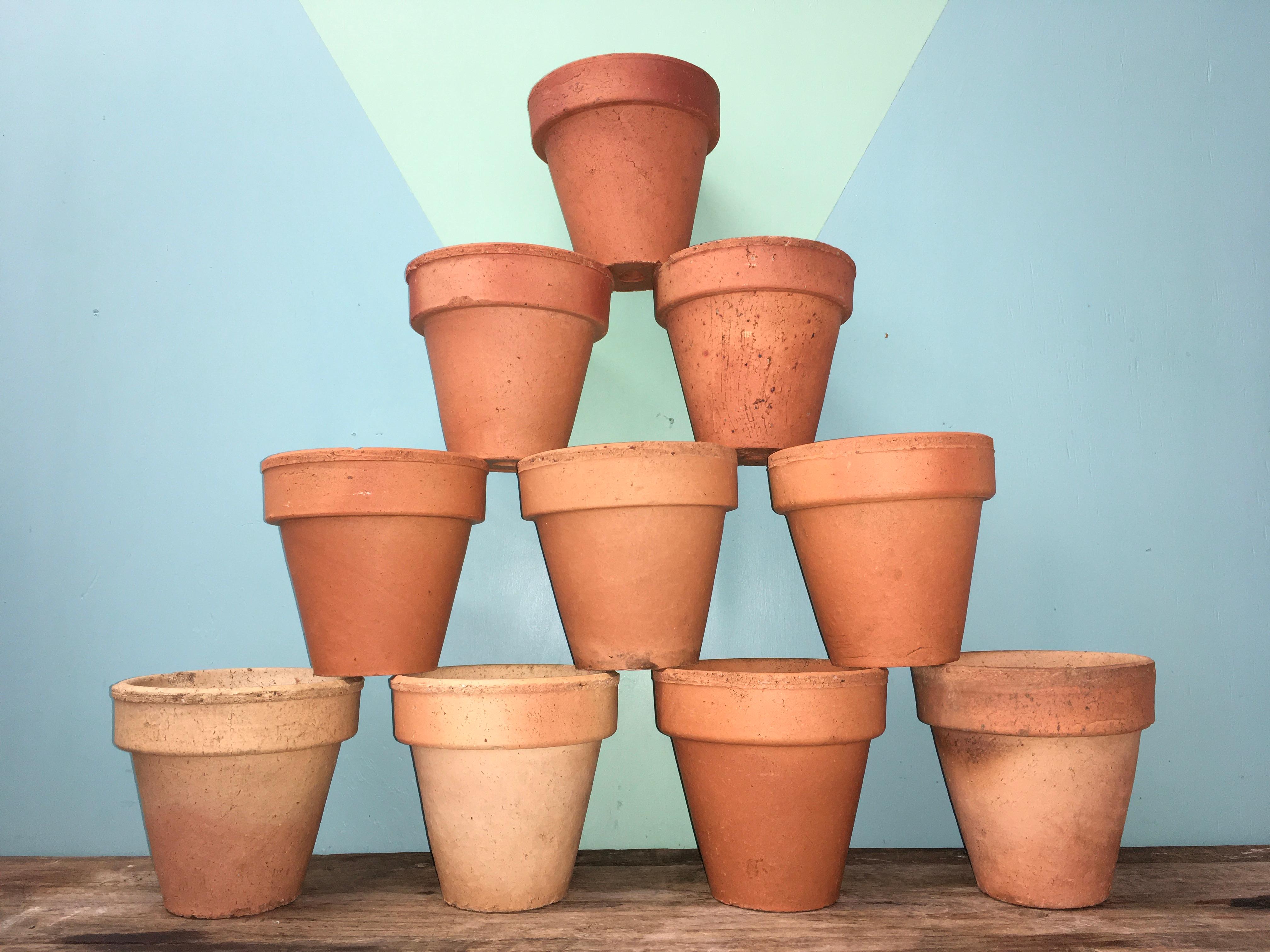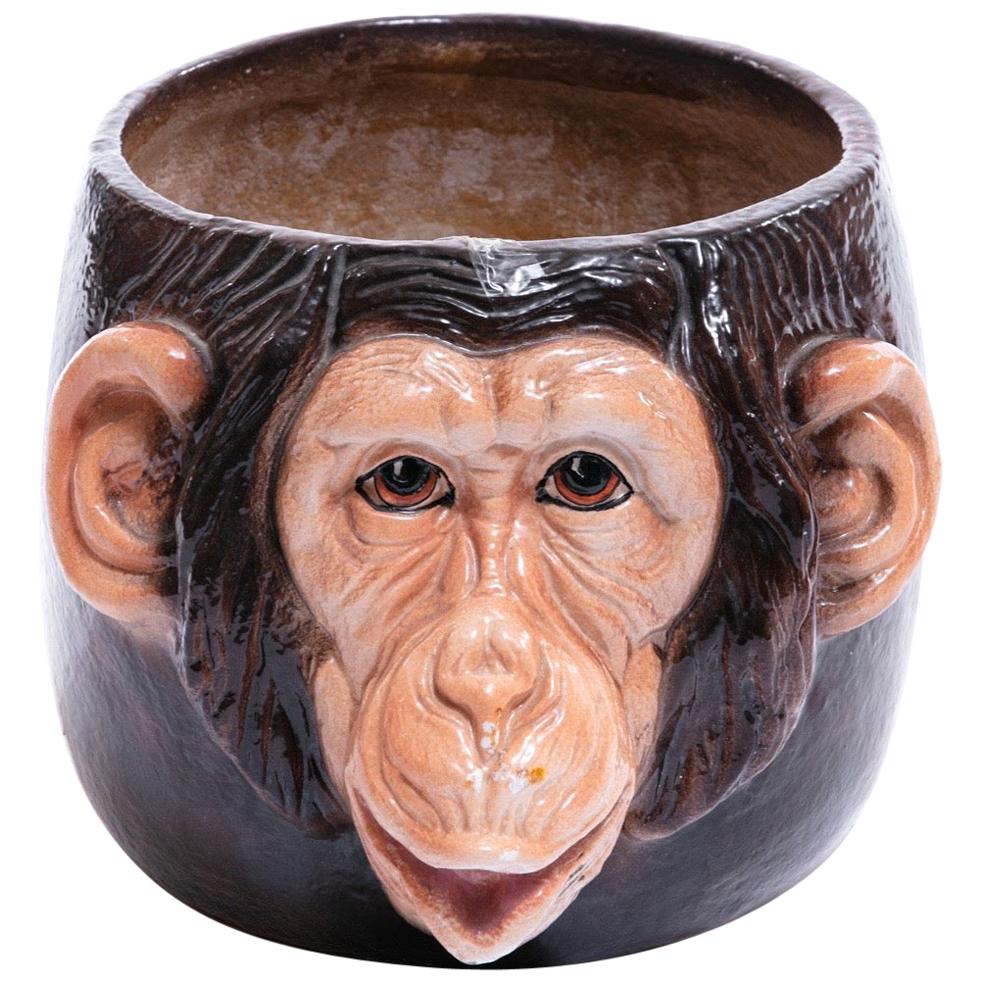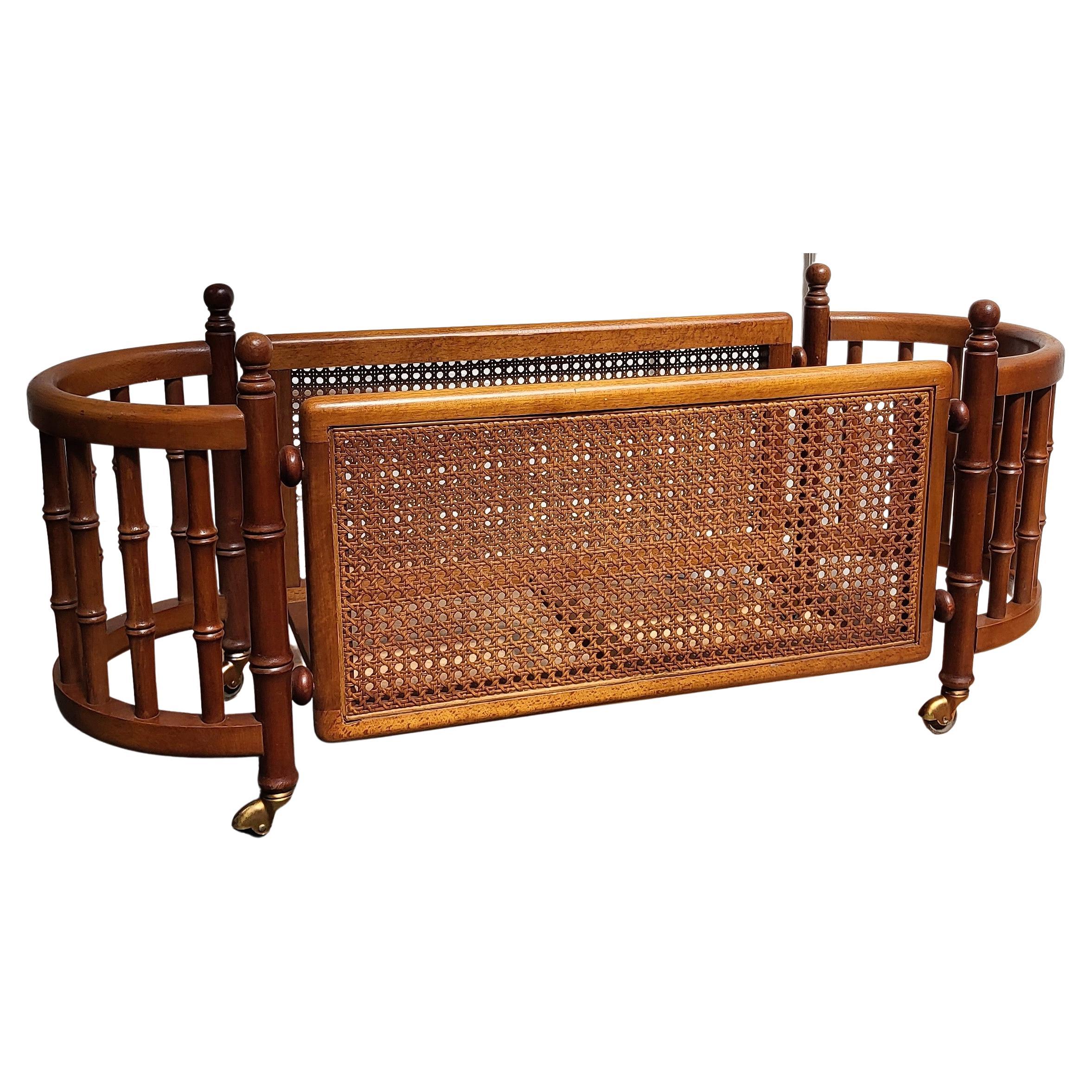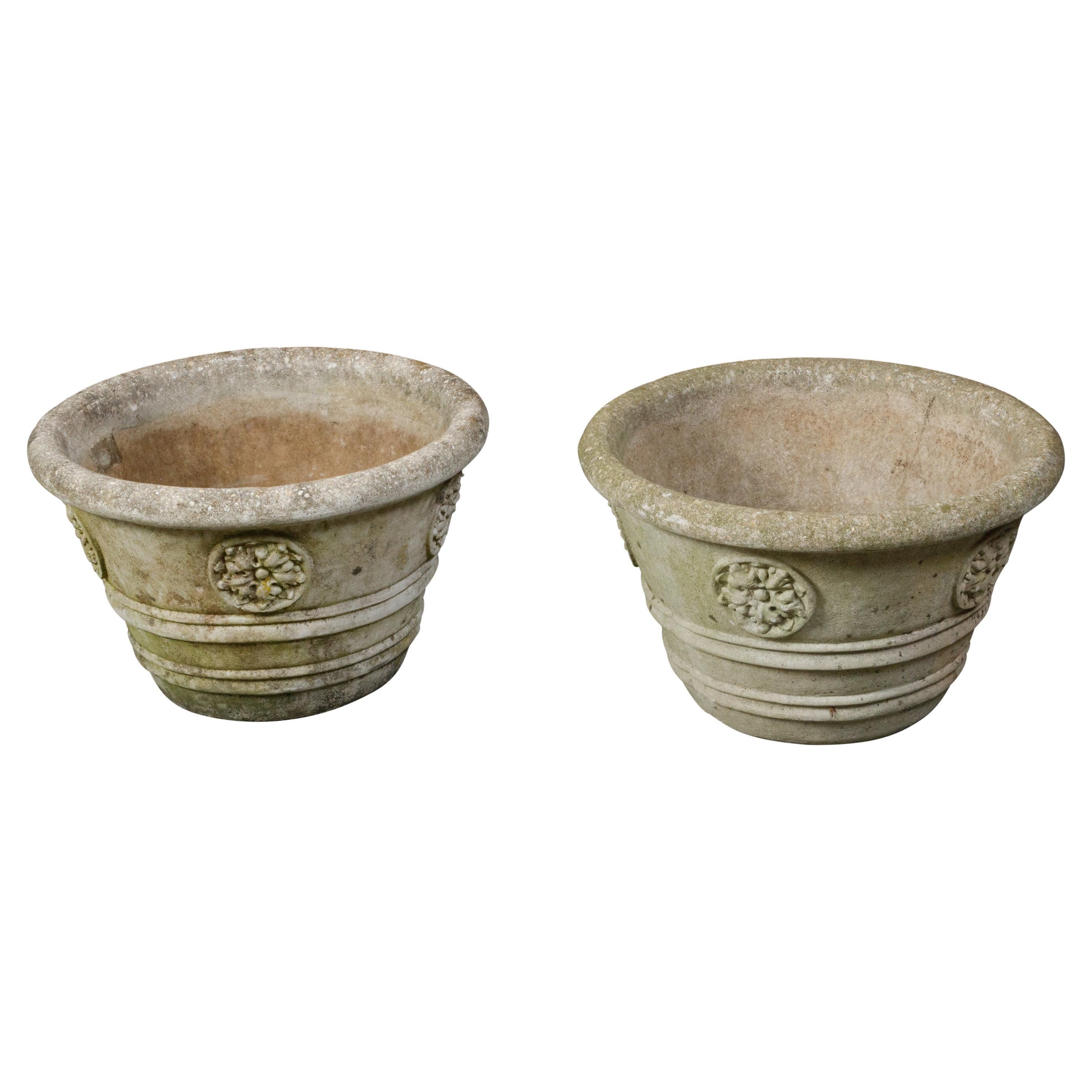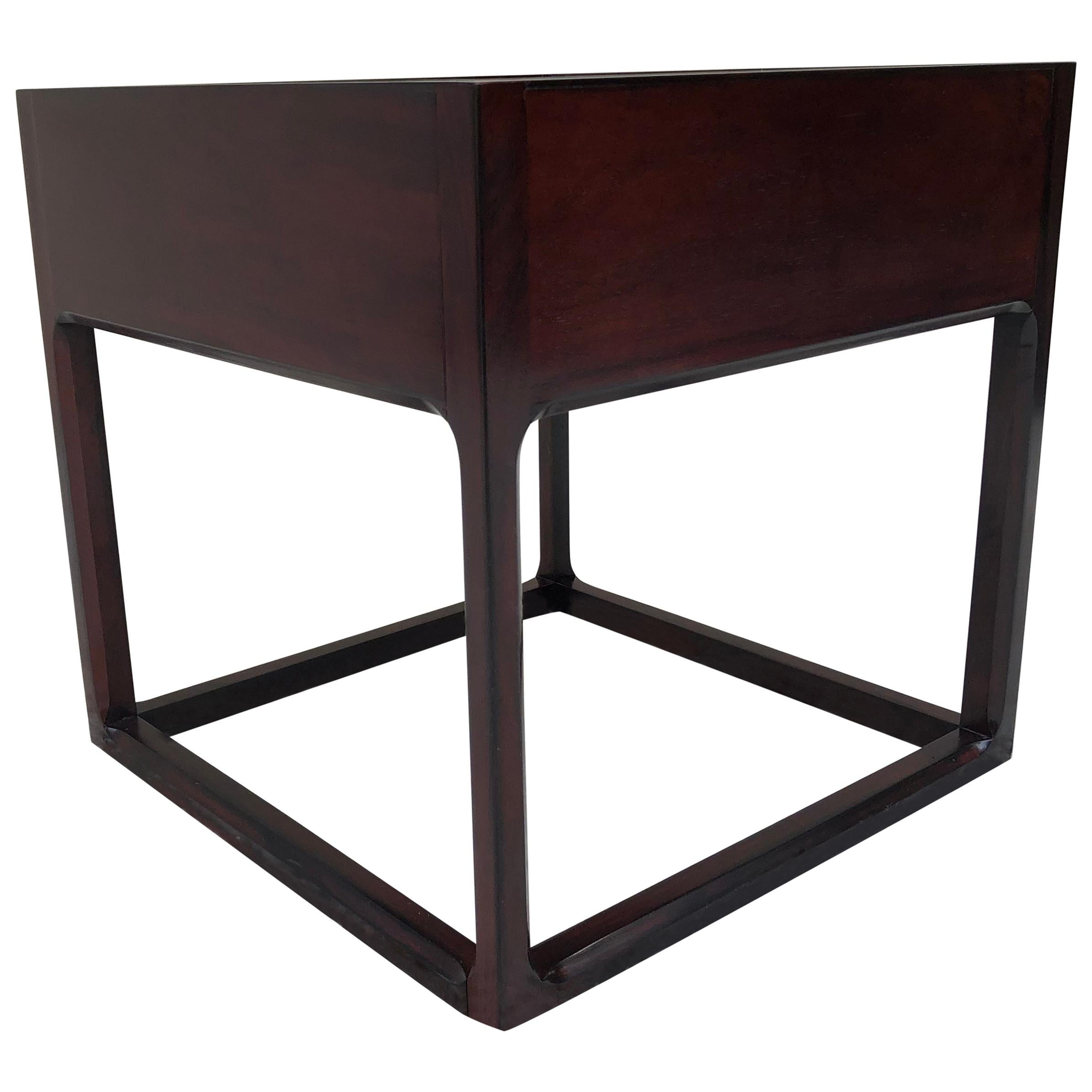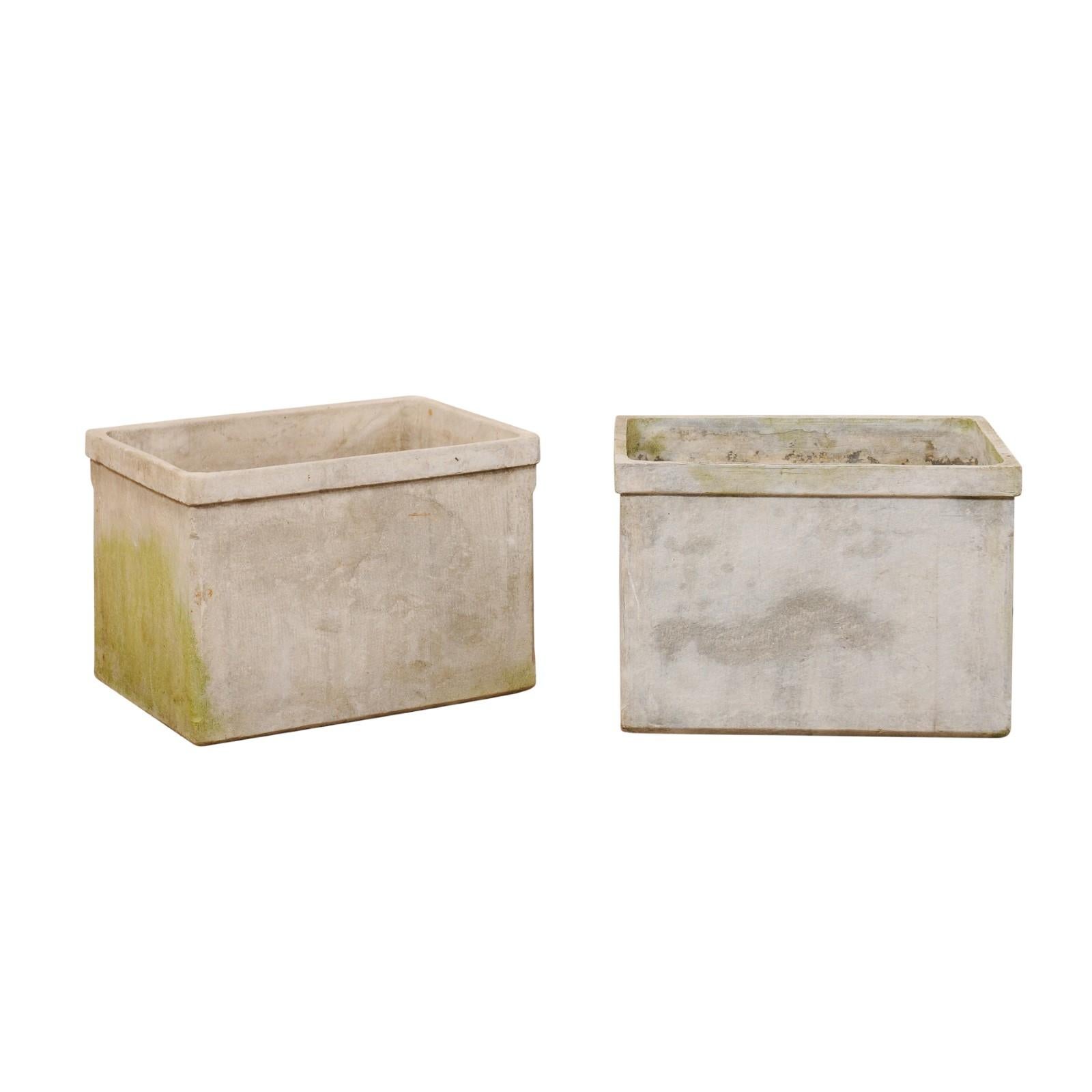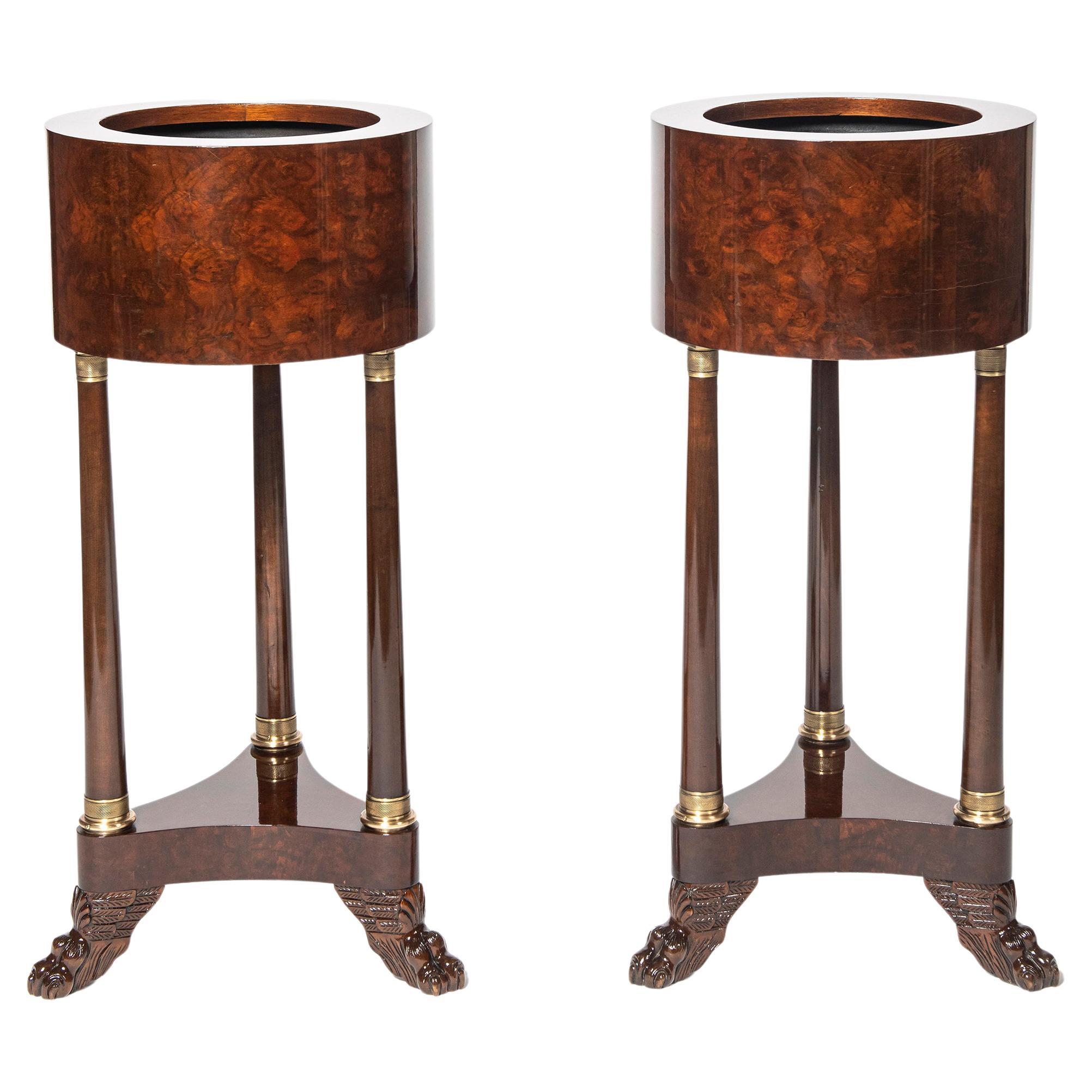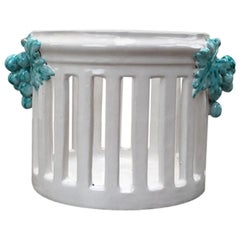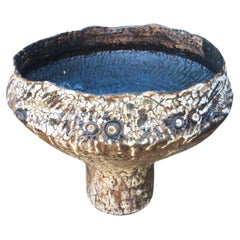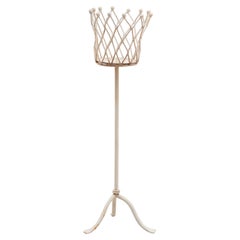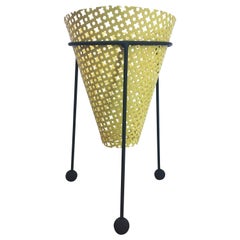
Yellow and Black Mid Century Ramler Planter in the Style of Mategot
View Similar Items
Want more images or videos?
Request additional images or videos from the seller
1 of 13
Yellow and Black Mid Century Ramler Planter in the Style of Mategot
About the Item
- Dimensions:Height: 15.36 in (39 cm)Diameter: 9.45 in (24 cm)
- Style:Mid-Century Modern (Of the Period)
- Materials and Techniques:
- Place of Origin:
- Period:
- Date of Manufacture:1954
- Condition:Refinished. Wear consistent with age and use. Metal stripped and repainted. Rubber feet have treated with wintergreen/alcohol to restore flexibility.
- Seller Location:Melbourne, AU
- Reference Number:1stDibs: LU2656324327312

About the Seller
5.0
Vetted Seller
These experienced sellers undergo a comprehensive evaluation by our team of in-house experts.
Established in 2013
1stDibs seller since 2017
138 sales on 1stDibs
Typical response time: 1 hour
More From This SellerView All
- Set of Ten Original Mid-Century Earthenware Terracotta Planter Pots, 1950sLocated in Melbourne, AUOriginal midcentury earthenware terracotta pots, approximately 5.3 inches/13.5cm diameter and 5 inches/13cm high with lovely colour variations ...Category
Vintage 1950s Australian Mid-Century Modern Planters and Jardinieres
MaterialsEarthenware, Terracotta
- Zaccagnini Majolica Planter, circa 1950By Mario Bandini, Urbano ZaccagniniLocated in Melbourne, AUA handcrafted plant pot holder by the Zaccagnini pottery. This lovely piece is styled as a cylinder of plain white columns under a plain edge, sporting two highly detailed bunches of...Category
Vintage 1950s Italian Mid-Century Modern Decorative Baskets
MaterialsTerracotta
$221 Sale Price25% Off - Very Large Brutalist Middle Eastern Ceramic Planter 1970sLocated in Melbourne, AUThis wonderful footed earthenware planter can be used as a vase or bowl. It presents as an impressive object in it's own right, or can be used as a plant pot holder. Based on ancient Middle Eastern hand-building and mineral glazing techniques, it has wonderful Organic Modern styling potential, but will also interest those who like ancient pottery and/or the Brutalist aesthetic of the 1970s. It was purchased in the late 1960s or early 1970s from Israel by a dedicated collector of ceramics for use as an Ikebana vessel, and shipped to Australia...Category
Vintage 1970s Israeli Brutalist Vases
MaterialsEarthenware
$3,150 Sale Price43% Off - Pair Rare John Campbell Terracotta Chinoiserie Planters or Umbrella StandsLocated in Melbourne, AUAn exceptionally rare pair of John Campbell planter pots. The design is attributed to John Cambell's son, Rupert John Campbell. John Campbell produced decorative pots at his brick works and pottery in Launceston, Tasmania from 1880 until 1975. Rupert John inherited his father's works and was a skilled artisan and potter. He developed presses for decorative pottery. This beautiful pair of jardinières likely date to the early 1900s. They were passed down through three generations. The original owner gave them to her son. In the 1980s the (then elderly) son gifted them to a friend (the last owner before this sale). At the time they received them they were made aware of their age and rarity. Now, another forty years later, they are potentially the only pair in existence. Only one similar John Campbell un-glazed terracotta 'umbrella stand' can be found on record. It was sold in 2008 in Tasmania, at a 'Fine Colonial Decorative Arts' auction run by Mossgreen Auctions, a reputable auction house, though since closed. I can find no other reference to this model, except an acknowledgement of the existence of an un-glazed terracotta umbrella stand, in the definitive record of Campbell's work by Kevin Power, 'John Campbell Pottery: Recollections and Collections' published 2014. These are of the same design and size but were manufactured with drainage holes in the base. They were clearly decorated using a press but the clay slabs were pushed into the press by hand. The interior of each pot shows the marks of hammers used to force the clay into the face of the press pattern. They have a hand-crafted appearance, with hand finished mould lines to each side and there are pressing faults apparent in various areas of the pattern. Tasmania was notably independent in production of most household goods, due to the isolation of the colony right up until the turn of the 19th century. Being at the farthest reaches of the British Empire, settled as a penal colony, with a relatively low consumer population, it was not a market for the high-volume import of domestic goods. As a consequence, household wares and decorative pieces produced in Tasmania through the 19th century represent a wholly independent category of Australian colonial design, production and craft. These pots are highly collectable and scarce artifacts of one of Tasmania’s earliest industries. In aesthetic terms, many Tasmanian artifacts are notable for following British, Georgian and Victorian fashions but with a colonial character of their own devising. Local characteristics became a stronger feature of Tasmanian decoration over time. Note the classical Georgian/Victorian chinoiserie motif of a bird foraging among rushes. In this case, the local interpretation depicts a Brolga (the largest Australian wetland bird) foraging amongst native Australian reeds and water lilies. Another of the things that sets early Tasmanian artifacts apart is the way in which necessity forced artistic production in pottery to be less refined than that of their British counterparts. A broad range of products had to be produced to meet local requirements, often by a single producer. John Campbell’s pottery is a great example of this practical necessity. It produced everything from industrial drainage pipes and bricks to household pottery and decorative items, all from a relatively small family run factory. Their domestic wares were so well trusted and appreciated that they by the 1940s they made their way all over the mainland of Australia. Under these circumstances, the refinement of decorative technique was not as great a priority as utility, consistent quality of production and durability. As a consequence, Australian colonial works and their early 20th century descendants such as these pots, are hugely appealing. They have an idiosyncratic and vernacular appearance, with British and European stylistic trends of their day overlaying a base of inventiveness, local interpretation and sturdy functionality. We hope you can appreciate the rarity and significance of this well-preserved pair of planter...Category
Vintage 1930s Australian Chinoiserie Planters, Cachepots and Jardinières
MaterialsTerracotta
- Merletto Glass Vase with Ground Lip, style of Harrachov CzechBy Harrach GlassworksLocated in Melbourne, AUThis may not be a vase by the Czech company Harrach, hence listed ‘in the style of’. Nevertheless, it has a strong central European 1950s aesthetic. We love to connect the objects we find to the social movements of their time. This vase was made in the 1950s - the atomic age. You can see the inclination towards science - experimental materials and technology, accuracy and super fine detail in the 'Merlatto' (lace) glass treatment of this vase. The Merletto pattern inside the glass is unlike the triple-threaded Czech version. It looks more like the earlier Seguso Merletto...Category
Vintage 1950s Czech Mid-Century Modern Vases
MaterialsArt Glass
- Olle Alberius Orrefors Exhibition Vase Signed Numbered 1973 Acid Yellow CobaltBy Olle Alberius, OrreforsLocated in Melbourne, AUAn Orrefors Art Glass crystal vase, signed ‘Orrefors Expo A 253-73 Olle Alberius’ (Olle Alberius, 1973). We love the wild colours combined in this vase, the punchy Op Art effect ...Category
Vintage 1970s Swedish Mid-Century Modern Vases
MaterialsArt Glass
You May Also Like
- Plant Stand, Jardiniere, Flower Stand, in Style of Mathieu MatégotBy Mathieu MatégotLocated in Antwerp, BEWrought iron lacquered cachepot or planter in style of Mathieu Mategot, 1950s France. In original good condition.Category
Vintage 1950s French Mid-Century Modern Planters and Jardinieres
MaterialsMalachite, Wrought Iron
- Pair of Mid-Century English Louis XVI Style Walnut Cachepots or PlantersLocated in Fayetteville, ARThis pair of mid-century English walnut square planters or jardinières is in the classic Louis XVI style. They feature brass pine cone finials at the corners and a drop ring handle o...Category
Mid-20th Century English Louis XVI Planters and Jardinieres
MaterialsBrass, Zinc
- Italian Mid Century Hand Painted Tiger PlanterBy Porcellane San MarcoLocated in Saint Louis, MOItalian mid century hand painted ceramic Tiger planter. Uniquely hand painted one of a kind ceramic planter made in Italy. Quickly add animal reference a...Category
Vintage 1960s Italian Mid-Century Modern Planters and Jardinieres
MaterialsCeramic
- Italian Mid Century Hand Painted Chimpanzee PlanterLocated in Saint Louis, MOWho doesn't love a chimpanzee? Hand painted Italian Mid Century ceramic planter. Festive. Fun. Lots of hand painted detail - a work of cera...Category
Vintage 1960s Italian Mid-Century Modern Planters and Jardinieres
MaterialsCeramic
- Bruno Rey "Planter" / Authentic Mid-Century ModernBy Bruno ReyLocated in Zürich, CHThe square planter is designed by Bruno Rey and manufactured as limited edition by Eternit AG, Switzerland in ca. 1954. Item is made from fibre concrete. Massive concrete pot is stan...Category
Mid-20th Century Swiss Mid-Century Modern Planters and Jardinieres
MaterialsConcrete, Steel
- Vintage Pair of Mid-Century Cast Stone Planters with Rosette MotifsLocated in Atlanta, GAA pair of vintage cast stone planters from the mid 20th century, with rosette motifs. We have two pairs available, priced and sold $3,750 per pair. Created during the Midcentury peri...Category
Mid-20th Century Mid-Century Modern Planters and Jardinieres
MaterialsCast Stone
Recently Viewed
View AllMore Ways To Browse
Zinc Bath
Galvanised Vintage Planters
Vintage Galvanised Garden Planters
Hand Bath Planter
Vintage Wrought Iron Plant Pot Stand
Vintage Metal Grate
Perforated Metal Planter
Vintage Metal Grates
Vintage Metal Plant Pot
Vintage Metal Plant Pots
Mategot Pot
Galvanised Planter
Vintage Metal Pot Plant Stand
Tall Planter Pot
Large Planter Cylindrical
Terracotta Pot 80cm
Pair Bronze Elephant Planters
French Wire Basket Scroll


